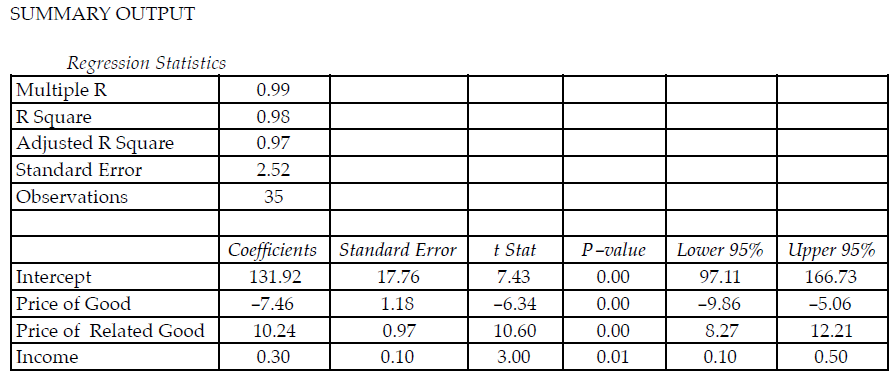Why do Mende elders remove a young girl's clitoris?
a. form of female circumcision
b. type of marriage
c. process of giving birth
d. tattooing the face
a
You might also like to view...
Refer to the table below. If the price of your good is $8, the price of the related good is $5, and the average income of consumers is $25,000, the predicted demand for your product is ________.

The demand for your product demands on three factors; the price of your good, the price of a related good, and the average income of your customers. Excel estimated the above linear demand for your product.
A) 8,643.22 B) 5,824.89 C) 5,234.33 D) 7,623.44
In this chapter's "Focus on Globalization" section, scientists trace the global spread of anatomically modern humans by constructing a global phylogenetic tree based on mtDNA (mitochondrial DNA). What have we learned from this tree?
A. Modern humans spread out of Africa over a million years ago. B. There was only one wave of migration into North and South America. C. The Ice Age temporarily halted early human migrations. D. The Americas were settled by multiple haplogroups rather than by a single ancestral population. E. Human migrations were not influenced by global climate change.
The La Chapelle-aux-Saints skeleton is not a typical Neandertal
a. and therefore not considered to be a Neandertal. b. because it represents what is most likely a deliberate burial. c. because is that of an older male. d. because, as a specimen, it is a nearly complete skeleton. e. because the individual not only had arthritis of the spine but evidences an extreme in the Neandertal range of variation.
All of the following are arguments against the functionalist interpretation of social inequality EXCEPT: a. those who obtain higher education should be paid more because of the amount of job preparation that theyhave
b. not all people in a society are motivated to maximize their wealth. c. some populations do not have equal opportunities to compete for positions. d. stratified societies do not always give the most valuable positions to those who most deserve them. e. it is fundamentally an ethnocentric argument.